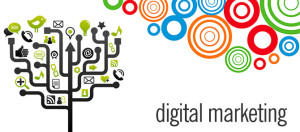It’s no secret that the rise of computer apps is transforming both the marketing and customer experience. One of the most intriguing developments in app development is in the area of chatbots that not only can send communications to customers but also respond “intelligently” to conversations.
Recently, I had the pleasure of speaking with Christian Brucculeri, the CEO at mobile messaging company Snaps, a developer of chatbots and other marketing technology products for companies. Brucculeri explained some of the background of how chatbots came to be, as well as their usefulness as a marketing tool.
“Typically chatbots represent a conversational interface between a consumer and a machine,” Brucculeri said. “They’re applications that have linguistic structure. It might allow you to ask a question and try to find an answer. They enable one-to-one communication between brands and consumers at scale, and they leverage technology in order to do that.”
Certainly chatbots have close technological relatives we’re already used to, like Apple’s Siri, Google Home and Amazon Alexa. You might call automated phone systems—the kind people love to hate—as a chatbot’s second cousin. But so far these are far from able to use artificial intelligence to understand language, and respond appropriately.
And while the technology can be used for entertainment purposes—think Snapchat or Facebook Messenger, for example—its greatest impact is potentially coming in marketing, Brucculeri told me.
Creating conversations, not messaging
“We work with brands across several industry verticals, including tourism, hospitality, entertainment, media, CPG, retail, quick-serve restaurants and more,” he said. “For example one apparel brand delivers a 30-day workout experience using basic Facebook Messenger. For some hospitality brands, they’re trying to manage their ongoing relationship with consumers and help them manage their rewards accounts.”
In many ways, this sounds similar to most apps we’re used to. So, what makes chatbots a different kind of app?
“Where chatbots get really interesting is in personalizing media and responses,” Brucculeri suggested. “Here, you can really do one-to-one marketing at scale.” Brucculeri said Snaps has developed such chatbots for sports teams, where a fan might receive notices of games, results and highlight videos. In the stadium, a chatbot might help a fan find restrooms and snack counters, based on physical location.
Brucculeri said Snaps is developing chatbots that function on a variety of existing platforms. Facebook Messenger, which launched a chatbot in 2016, may be most appropriate in accessing consumers, he said, but there’s also Kik, WeChat, Slack and many others, each of which may be experience-specific.
Chatbots also can be connected to customer relationship management platforms, such as Salesforce, to deliver notifications at the right time to the right person, Brucculeri said.
“We do CRM integration and user matching to log in and do account management,” he said. The result might enable companies to find new customers, engage with existing customers in a fun way, getting customers to take some form of action, or managing the relationship in other ways.
Improving the customer experience
Customer service, driven by artificial intelligence, also can be aided powerfully by such matching, Brucculeri said. Instead of hitting a bunch of digits to get routed to the right person, the artificial intelligence capabilities of chatbots—the two-way ability to listen and respond appropriately—can improve this experience immensely.
“A chatbot can do this in ways that are more convenient, simple, fast, and better for the customer and probably less expensive for the customer-service function,” he said.
The future of chatbots is an intriguing one, as technology evolves and as the bots themselves get “smarter” and more humanlike in their analyses and responses.
“We’re long on the idea that conversational interfaces will continue to evolve. Whether consumers are texting with or talking to them, automated systems like bots are almost certainly going to have a role in our future lives” Brucculeri said. “We see conversational media becoming the next wave and being potentially bigger than application media itself. I think in three years, people might be talking to bots more than they’re typing in bots.
“But the main idea remains the same,” he said. “Might I one day launch a chatbot on Alexa, Amazon’s voice control system? How about getting some type of visual element to go along with that, such as HoloLens, Microsoft’s holographic headset? Can these things become really rich experiences, far better than just staring at our phones and typing?
“I think some of the form factors are going to change, but I think the fundamental elements are going to be the same, which is conversational commerce. People increasingly will be talking to their computers, and they’re going to get a lot done by doing it.”











